PDF chapter test TRY NOW
Let us look at our surroundings for a moment. We see glass tumblers, buckets, traffic cones in our day to day life. Do you know what shape is these all? If your answer is a cone, then it is wrong.
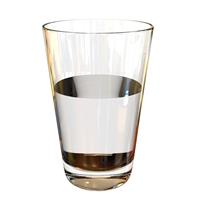 | 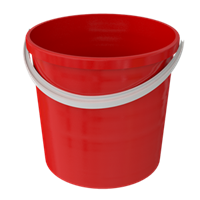 | 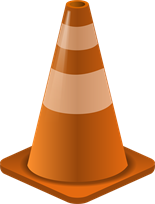 |
The shape resembling in the above pictures is called the frustum of a cone.
If a smaller end of the cone is sliced by a plane parallel to its base, the portion of a solid between this plane and the base is known as the frustum of a cone.
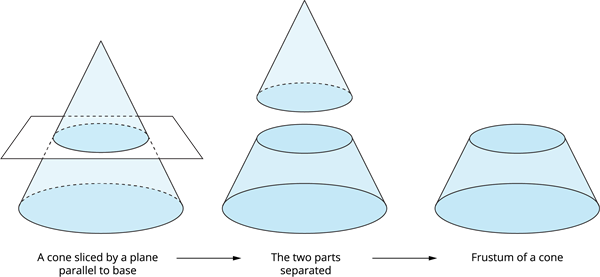
Surface area of a frustum of a cone
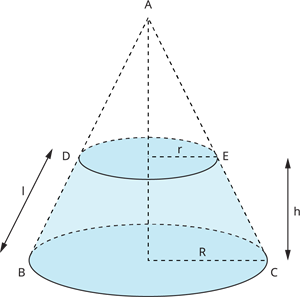
Let R and r be the radii of the bases (R > r), h be the height, and l be the slant height of the frustum of a cone.
Curved surface area:
C. S. A. = \frac{1}{2} (sum of the circumferences of base and top region) \times slant height
= \frac{1}{2}(2 \pi R + 2 \pi r) l
= \frac{1}{2} \times 2 \pi (R + r) l
= \pi (R + r) l
Curved surface area of a frustum of a cone = \pi (R + r) l, where l = \sqrt{h^2 + (R - r)^2} sq. units
Total surface area:
T. S. A. = Curved surface area + Area of the bottom circular region + Area of the top circular region
= \pi (R + r) l + \pi R^2 + \pi r^2
Total surface area of a frustum of a cone = \pi l(R + r) + \pi R^2 + \pi r^2, where l = \sqrt{h^2 + (R - r)^2} sq. units
Reference:
Image by Clker-Free-Vector-Images from Pixabay
